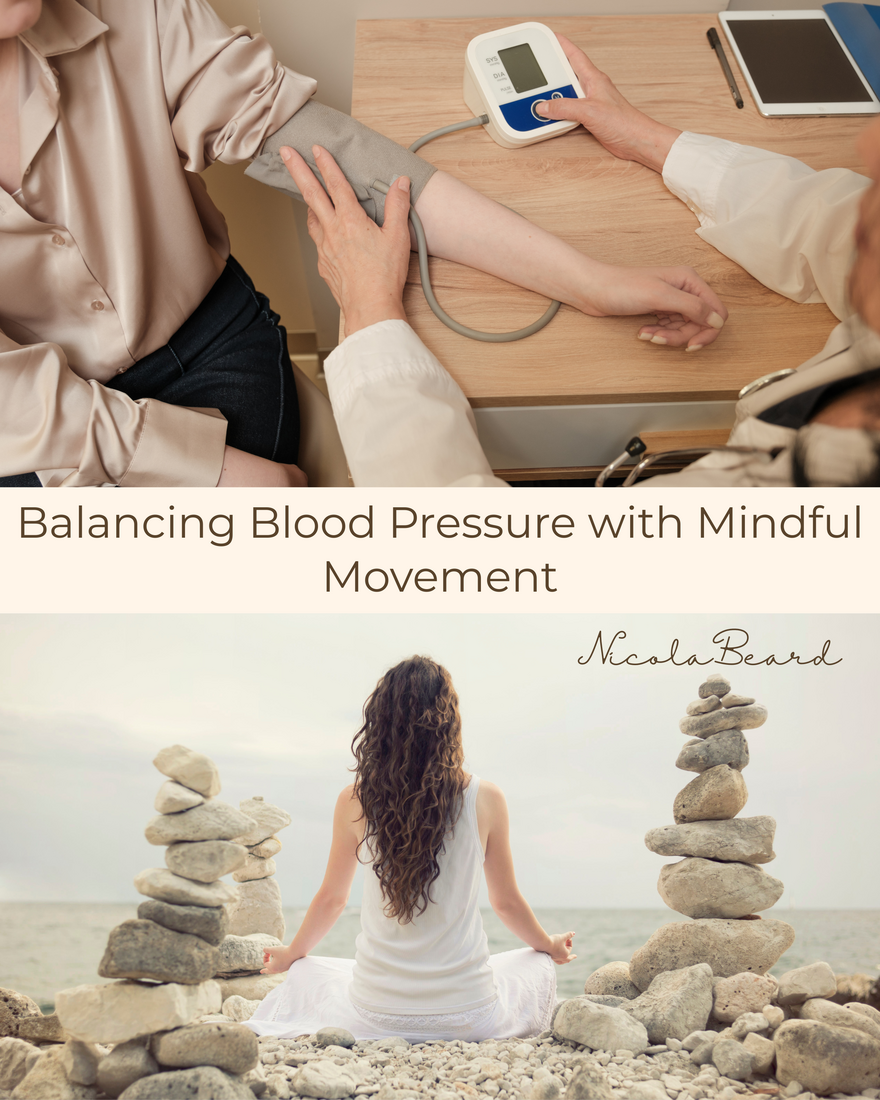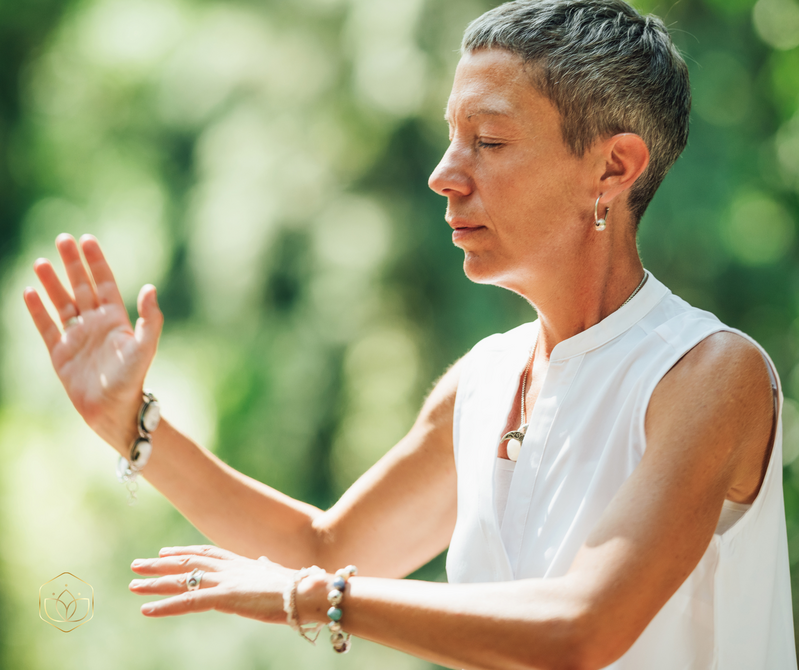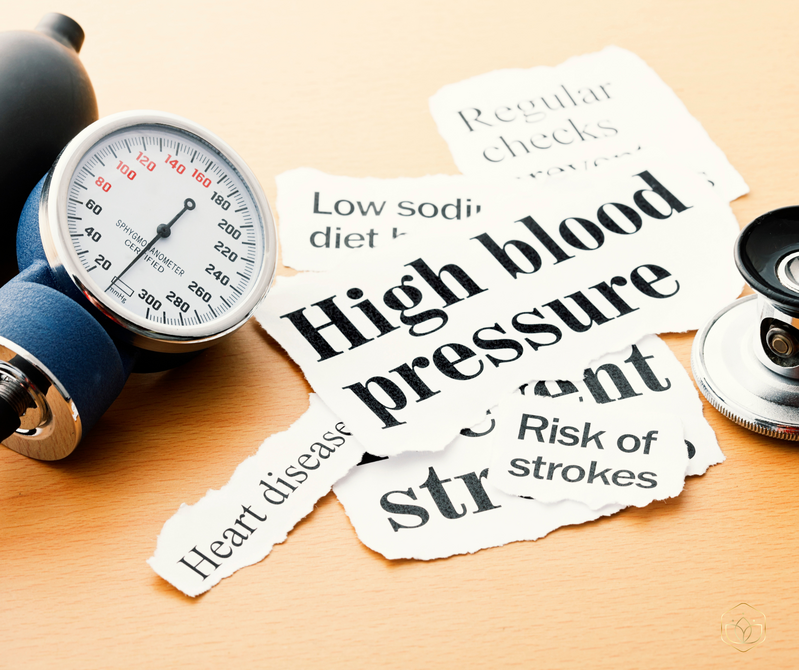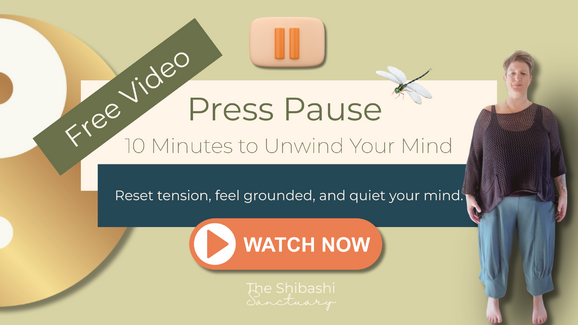
How slow, steady movement helps calm the body and support healthy circulation
The body is always working to maintain balance. Every heartbeat, breath, and chemical signal forms part of a constant process called homeostasis, the body’s way of keeping internal conditions steady despite what is happening around it. Blood pressure, temperature, and oxygen levels all depend on this quiet coordination between the heart, lungs, blood vessels, and nervous system. When the balance is disturbed, small adjustments take place automatically to restore order.
Traditional Chinese Medicine describes this same process through the principle of yin and yang. Where Western science speaks of homeostasis, Eastern philosophy speaks of dynamic balance between two complementary forces that keep the body in harmony. Yang represents activity, movement, and energy, while yin represents rest, nourishment, and recovery. Health is maintained when these two qualities interact smoothly. When yang dominates, tension, heat, and pressure build. When yin is depleted, the body struggles to cool, calm, and restore itself.
High blood pressure can be seen as a sign that this internal balance has been lost. The vessels tighten, the heart works harder, and the body remains in a heightened state of readiness. Restoring calm through movement, breath, and awareness allows the body to return towards equilibrium. This is the meeting point between modern physiology and ancient practice. Both recognise that the body seeks balance, and both show that mindful movement can help it find its way back.
Mindful, controlled movement offers a way to support the system from both directions. Physically, it helps blood flow more freely through the vessels. Neurologically, it signals safety to the nervous system, helping the body relax its grip on pressure. Tai Chi Qigong Shibashi raises the heart rate in a steady, moderate way, improving circulation without overloading the cardiovascular system. The focus is on rhythm, breath, and control rather than exertion, allowing the body to find balance between effort and relaxation.

How Slow, Rhythmic Movement Supports Circulation
Each time you shift your weight, bend the knees, or move the arms in a steady arc, the muscles of the legs and trunk act like a natural pump. This rhythmic contraction helps move blood back towards the heart, improving venous return and oxygen delivery. The smoother the flow, the less turbulence inside the arteries, which helps vessel walls stay responsive.
Recent studies show that slow, continuous exercise increases endothelial nitric oxide production, improving arterial elasticity and the vessels’ ability to widen when pressure rises (Zhao et al., 2022; Yang et al., 2023). This nitric oxide pathway is now recognised as a key part of blood pressure regulation. When we move in rhythm with the breath, we strengthen this natural signalling system, teaching the vessels to adapt smoothly instead of reacting with stiffness.
One of the best-studied forms of Qigong is Ba Duan Jin, often translated as Eight Brocades. It is a traditional sequence of eight flowing movements designed to stretch, stabilise, and coordinate the body while regulating breath. Each section focuses on a different region or function, such as opening the chest, strengthening the legs, or supporting digestion. The sequence is widely practised across China as a daily health routine and is now used in research as a model for Qigong training.
In recent clinical trials, Ba Duan Jin practice over several months lowered systolic blood pressure by around 9 mmHg and diastolic by 6 mmHg on average (Zhao et al., 2022). These are clinically meaningful changes that match improvements seen with other moderate forms of activity. Shibashi follows a similar principle: steady pacing, controlled breathing, and integrated movement that builds circulation without strain.
The Role of Breath and the Nervous System
The cardiovascular system does not work alone. It is guided by the autonomic nervous system, which determines whether the body should be alert or at rest. When stress levels rise, the sympathetic branch increases heart rate and constricts vessels. When we slow the breath, especially through the nose, the parasympathetic branch rebalances that response.
One of the key ways this happens is through a mechanism called baroreflex sensitivity. Baroreflexes are pressure sensors in the walls of the arteries that detect changes in blood pressure and send signals to the brain to adjust heart rate and vessel tension. When this reflex is sensitive and responsive, the body can stabilise blood pressure quickly and efficiently.
Research shows that deliberate breathing at six to ten breaths per minute enhances baroreflex sensitivity and lowers blood pressure by promoting relaxation of the vessel walls (Frontiers in Physiology, 2023). These physiological adjustments explain why combining breath with movement is more effective than either alone.
At the beginning of practice, breathing is often high in the chest and shallow. As movement continues, the breath naturally deepens, the ribs and tummy start to move together, and the shoulders begin to relax. These gradual shifts show the body moving from alertness into recovery, allowing circulation to flow more freely.

What Research Shows About Qigong and Blood Pressure
Modern reviews continue to support what practitioners have long observed. A 2023 systematic review found that more than twelve weeks of Tai Chi reduced average systolic pressure by 11.7 mmHg and diastolic by 4.7 mmHg, alongside measurable increases in nitric oxide levels and vascular flexibility (Yang et al., 2023). Another large meta-analysis confirmed that Qigong improves blood pressure and reduces other risk markers such as fasting glucose and cholesterol (Frontiers in Physiology, 2023).
Researchers are now paying closer attention to the underlying mechanisms. A review in Signal Transduction and Targeted Therapy (Wang et al., 2023) describes how stress, oxidative imbalance, and reduced nitric oxide signalling contribute to vessel stiffness. Movement practices that combine breathing, postural control, and mental focus appear to counter these effects, reducing oxidative load and restoring healthy vessel tone.
In simple terms, when you move with awareness, you are not only improving muscle coordination but also encouraging biochemical balance within the vessels.

What I Notice in Practice
The changes many people experience in class reflect this research. Muscles begin to relax, colour returns to the skin, and the body feels warmer as peripheral circulation improves. Participants often describe feeling clearer or more grounded, because their body has finally let go.
This shows the nervous system moving from defence into recovery. When the body feels safe, circulation adjusts naturally, directing blood to the muscles and organs that need it. With repetition, this new pattern becomes the default.
A Five-Minute Sequence to Try
Stand with your feet hip-width apart and knees softly unlocked.
Relax your jaw and let your tongue rest on the roof of your mouth.
Inhale through the nose for four counts, exhale for six.
As you breathe in, let your arms float up to shoulder height. As you breathe out, let them lower with the elbows slightly bent.
As you lower your arms, keeping your tailbone tucked in and slightly bend your knees.
As you breathe in again rise up slightly from the knees, as you lift your arms.
Continue for five minutes, keeping the movement smooth and unhurried.
This sequence lightly raises heart rate, improves venous return, and reinforces the connection between breath and circulation. Over time, it helps the vessels regain their ability to expand and contract with ease, supporting steadier blood pressure (Frontiers in Physiology, 2023; Zhao et al., 2022).

The Energy Perspective
In Traditional Chinese Medicine, movements that open the chest are thought to support the Heart and Lung systems. These organs are seen as part of a wider network of energy pathways that link physical health with emotional balance.
When the chest expands, the lungs are said to release stagnant energy and draw in fresh Qi, refreshing the body’s internal environment. The Lung system also governs the movement of Qi through the body and maintains Wei Qi, the protective energy that supports immune strength and vitality. The Heart system benefits at the same time, as smooth circulation and relaxed breathing help steady the emotions and promote a sense of ease.
The chest is also home to the Middle Dantian, one of three main energy centres described in Qigong. It represents the meeting point of physical vitality and emotional wellbeing. Practices that open and soften this area are believed to gather and harmonise energy, helping to stabilise mood and support clear, balanced movement.
From a Western view, these same actions improve mobility through the ribs and diaphragm, enhance lung capacity, and increase blood flow to the heart and upper body. Whether described in energetic or physiological terms, the outcome is the same: posture opens, breathing deepens, and the body feels lighter and more connected.
Closing Thoughts
Healthy blood pressure depends on how well the body communicates within itself. The heart, blood vessels, muscles, breath, and mind all influence one another. When one part is under strain, the rest must adjust. Movement that restores rhythm between these systems allows the body to return to balance.
What makes Tai Chi Qigong Shibashi and other mindful movement practices effective is their combination of physical and neurological training. The body is strengthened through controlled, repeated motion, while the nervous system learns that effort can exist alongside calm. Each coordinated breath supports vascular flexibility and helps the heart maintain a steady rhythm. Over time, this builds a balanced response to daily stress.
Recent research supports this approach, showing that consistent, moderate movement improves nitric oxide signalling, vessel health, and nervous system regulation. It also improves body awareness. Moving slowly enough to notice tension, breath, and posture teaches self-regulation, the ability to recognise when the body is working too hard and to restore equilibrium.
From an energetic view, this steady rhythm between movement and breath mirrors the principle of balance in Traditional Chinese Medicine. Stillness complements action, and release follows effort. Whether we describe it through science or energy, the lesson is the same: the body functions best when movement and awareness work together.
Blood pressure management is more than a medical measurement. It reflects how harmoniously the body and mind are working as a system. Mindful practice strengthens that connection, helping the body move with control and rest when needed. This balance supports not just cardiovascular health but also confidence and presence in daily life.
If you would like to explore this further, join a TaiChi Qigong Shibashi class or try the Press Pause 10 Minute Video inside The Shibashi Sanctuary. Each session reconnects breath, posture, and awareness, supporting the heart’s natural rhythm and helping you feel calm, capable, and strong in body and mind.

Please note:
This information is for general education and does not replace medical advice. If you have high blood pressure or take prescribed medication, continue to follow your doctor’s guidance and use these practices as a gentle form of support alongside your treatment plan.
References
Frontiers in Physiology (2023) Effects of Qigong exercise on metabolic and cardiovascular health: a systematic review and meta-analysis, 14, 1092480.
Wang, Y. et al. (2023) Mechanisms of vascular dysfunction in hypertension: the NO-sGC-cGMP pathway revisited. Signal Transduction and Targeted Therapy, 8, 118.
Yang, Y. et al. (2023) Tai Chi exercise and its effect on blood pressure and nitric oxide in adults: a systematic review and meta-analysis. Frontiers in Cardiovascular Medicine, 10, 1016629.
Zhao, J. et al. (2022) The effect of Ba Duan Jin exercise on blood pressure and vascular function in hypertensive adults: a meta-analysis. Frontiers in Cardiovascular Medicine, 9, 936018.

